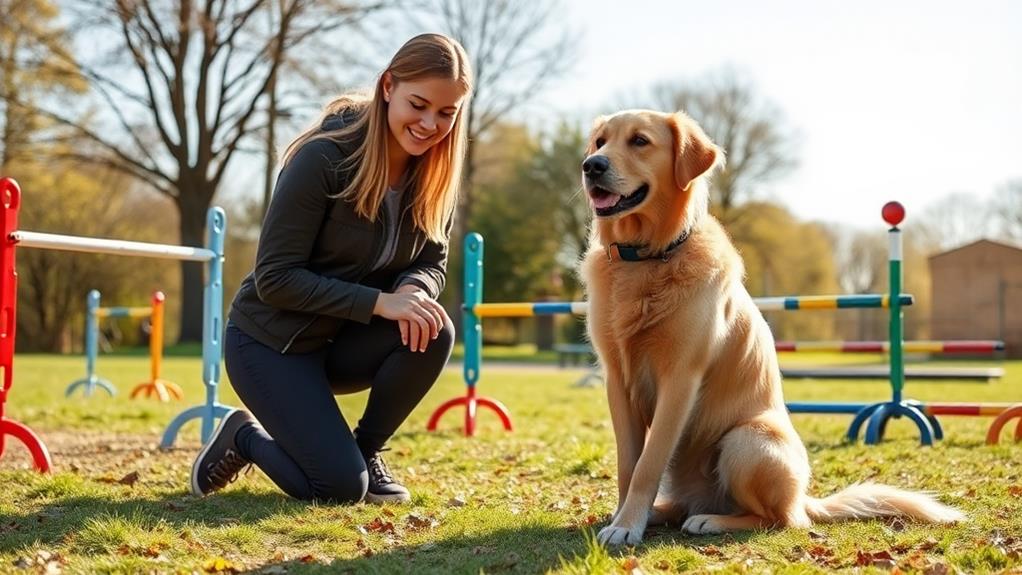To get started with dog training, you'll want to establish a consistent routine, dedicating short daily sessions in a distraction-free space. Use positive reinforcement—reward your dog's good behaviors with treats or praise right after they perform the action. Teach basic commands like "sit," "stay," and "come," using clear, consistent cues. Don't forget to socialize your dog by exposing them to different environments and people while ensuring these interactions are positive. Ultimately, be patient and consistent; dogs need time to learn. Explore these steps in detail to make your training journey smoother and more effective.
Establish a Training Routine
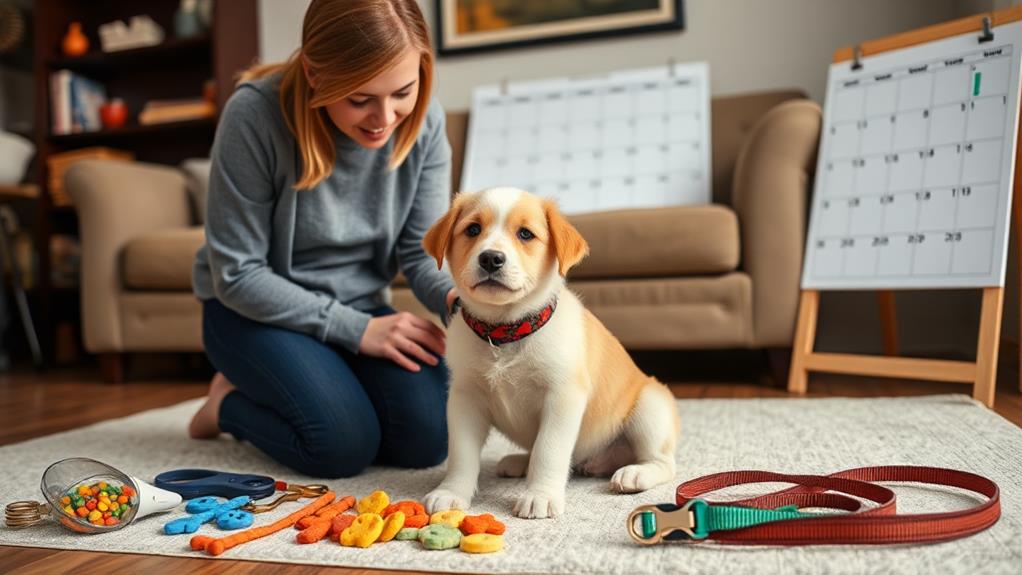
Establishing a training routine is critical for your dog's success and your peace of mind. When you create a consistent schedule, your dog learns what to expect, which helps reduce anxiety and fosters good behavior.
Start by setting aside dedicated time each day for training sessions. Aim for short, focused sessions lasting about 5 to 10 minutes, as dogs can lose interest quickly.
Pick a quiet space free from distractions to help your dog focus. Make sure everyone in your household is on board with the training routine to maintain consistency. Use the same commands and cues each time, as this helps your dog understand what you want.
Incorporate training into daily activities, like practicing commands during walks or before feeding. This not only reinforces learning but also makes training a natural part of your dog's life. Remember, patience is key; if your dog struggles with a command, give them time to grasp it without frustration.
Regularly assess your training goals and adjust your routine as necessary. Consistency, patience, and clarity are essential elements that will set your dog up for success in the long run.
Use Positive Reinforcement
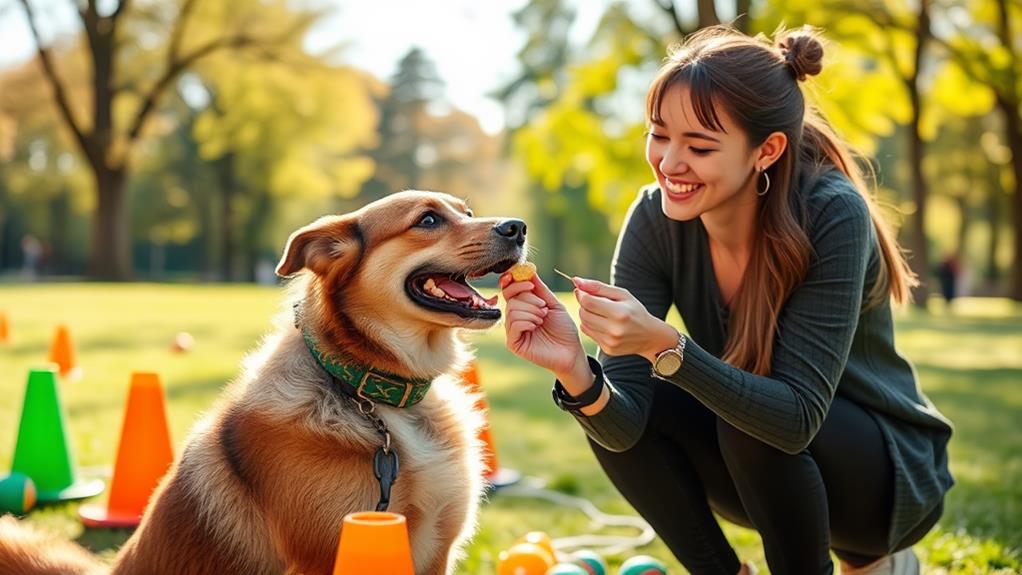
Using positive reinforcement is a powerful way to encourage good behavior in your dog. This technique involves rewarding your furry friend for actions you want to promote. Rewards can include treats, praise, or playtime, and they help create a positive association with desired behaviors.
When your dog sits, stays, or comes when called, immediately provide a reward. Timing is essential; giving a treat or praise right after the action reinforces the behavior effectively. Remember, consistency is key. Make sure everyone in your household uses the same commands and rewards to avoid confusing your pup.
Be mindful of the type of reward you choose. High-value treats are often more effective, especially in distracting environments. Start with short training sessions to keep your dog engaged and motivated to learn.
Avoid punishing your dog for mistakes; instead, redirect unwanted behavior and reward them when they choose the right action. This approach builds trust and strengthens your bond. With patience and persistence, you'll see improvements in your dog's behavior and a happier, more obedient companion. Positive reinforcement not only teaches your dog what to do but also fosters a joyful learning atmosphere.
Teach Basic Commands
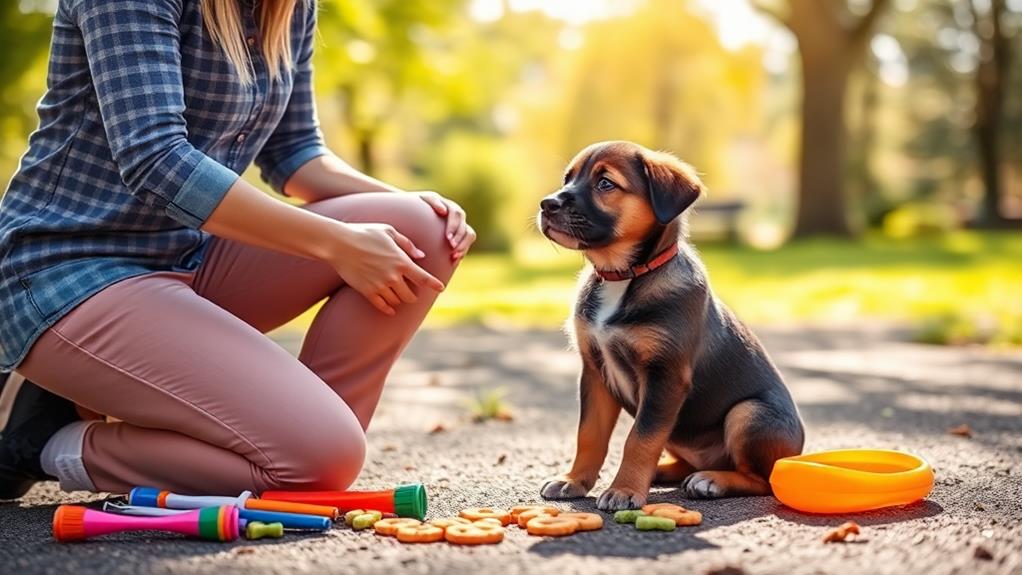
Teaching your dog basic commands is essential for effective communication and a well-behaved pet. Commands like "sit," "stay," and "come" establish a foundation for good behavior and can keep your dog safe in various situations. Start with short training sessions of about 5 to 10 minutes, using positive reinforcement to encourage your dog.
Here's a quick reference table for basic commands:
| Command | Action | Tip |
|---|---|---|
| Sit | Dog lowers rear to the ground | Use a treat above their nose to guide them down |
| Stay | Dog remains in their current position | Gradually increase the duration before rewarding |
| Come | Dog moves towards you | Call them excitedly and reward them immediately |
Consistency is key! Always use the same word for each command and practice regularly. If your dog doesn't respond, try a different approach, like changing your tone or using a toy as a reward. With patience and practice, your dog will learn these commands and become a more obedient companion.
Socialize Your Dog
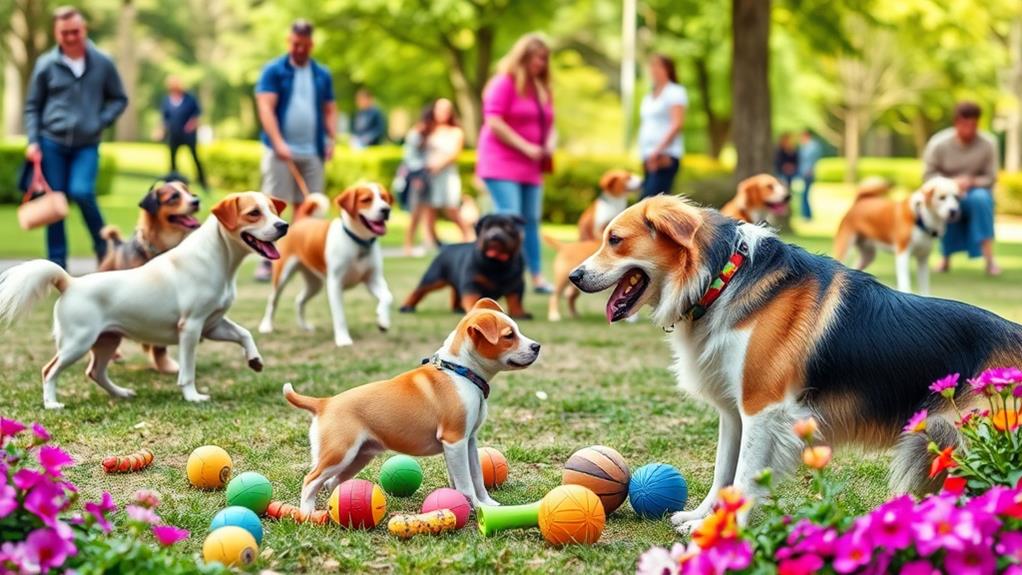
Socializing your dog is crucial for their overall development and well-being. It helps them learn how to interact with other dogs, people, and different environments. Start early; puppies are most receptive to socialization between 3 and 14 weeks. This is the perfect time to expose your pup to various sights, sounds, and smells.
Take your dog to parks, pet-friendly stores, and busy streets. Allow them to meet other dogs and people, but guarantee these encounters are positive. Use treats and praise to reinforce good behavior during these interactions. If your dog seems anxious or overwhelmed, don't push them too hard. Gradually increase their exposure to new experiences at their own pace.
Group classes can also be beneficial. They not only introduce your dog to new playmates but also offer a controlled environment for learning. During these sessions, encourage positive interactions and intervene if play becomes too rough.
Be Patient and Consistent
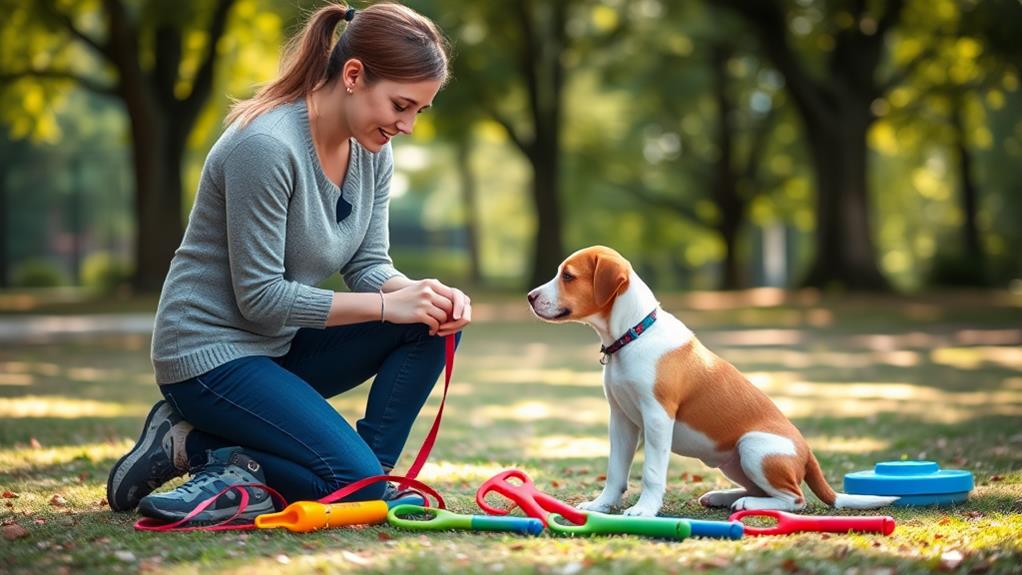
When training your dog, patience and consistency are key ingredients to success. Dogs don't learn overnight; they need time to grasp new commands and behaviors. You can't expect your furry friend to master sit, stay, or come in just a few sessions. Instead, practice regularly and stay calm, even when progress seems slow.
Consistency is equally important. Use the same commands and signals every time you train. If you say "sit" one day and "down" the next, your dog will get confused. Establish a routine for training sessions, and make them a regular part of your day. This will help your dog understand what's expected and reinforce their learning.
Remember, training isn't just about teaching commands; it's also about building a strong bond with your dog. Celebrate small victories, and don't get discouraged by setbacks. Every dog learns at their own pace, so focus on your progress rather than comparing to others.
In the end, your patience and consistency will pay off. You'll end up with a well-behaved dog and a deeper connection with your furry companion. So take a deep breath, stay the course, and enjoy the journey!
Frequently Asked Questions
What Age Is Best to Start Training a Dog?
The best age to start training a dog is typically around 8 weeks. At this stage, they're receptive and avid/keen/enthusiastic to learn. Early training helps establish good habits and strengthens your bond with them.
How Long Should Training Sessions Last?
Did you know most dogs can only focus for about 10-15 minutes? So, keep your training sessions around that length. It'll help your pup stay engaged and make learning more effective and enjoyable for both of you.
Can I Train a Rescue Dog Effectively?
Yes, you can train a rescue dog effectively! With patience and consistency, you'll build trust and strengthen your bond. Focus on positive reinforcement, and you'll see progress as your dog learns and adapts to your guidance.
What Tools or Equipment Do I Need for Training?
You'll need a few key tools for effective training. Start with a sturdy leash, treats for motivation, and a clicker for marking good behavior. These essentials will set you on the path to success!
How Do I Handle Training Setbacks or Challenges?
When you face training setbacks, stay calm and reassess your approach. Identify the challenge, adjust your methods, and be patient. Consistency and positive reinforcement will help you overcome obstacles and build your dog's confidence.
Conclusion
By following these five vital steps, you're setting your dog up for success and building a strong bond. Remember, "Rome wasn't built in a day." Training takes time, patience, and consistency. Celebrate the small victories along the way, and don't hesitate to seek help if needed. With dedication and love, you'll see your furry friend flourish into a well-mannered companion. So grab those treats and get started—your journey together is just beginning!

